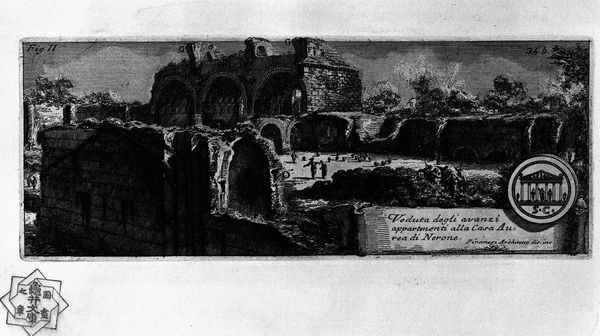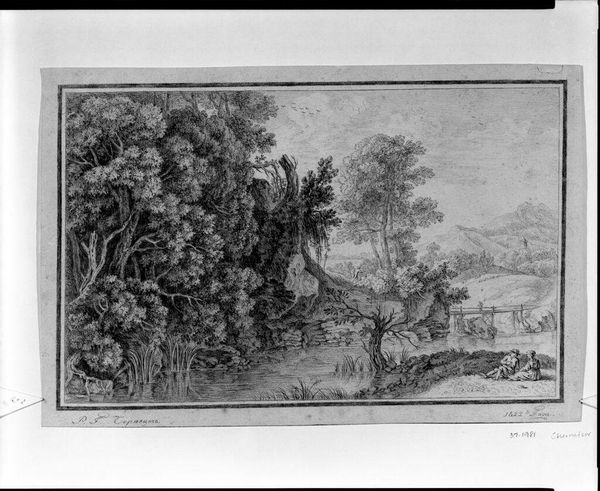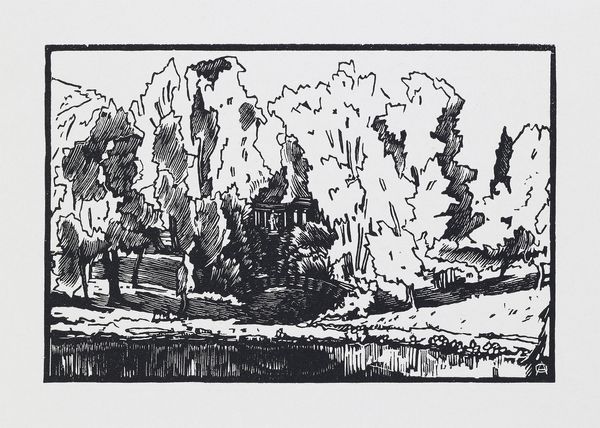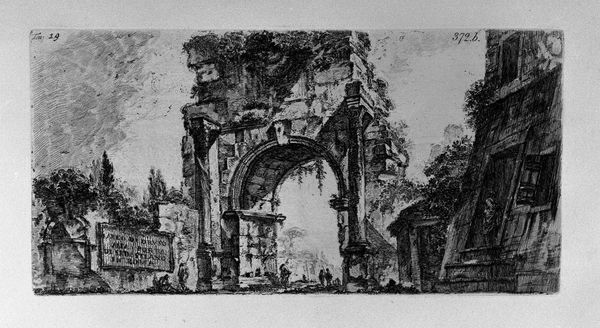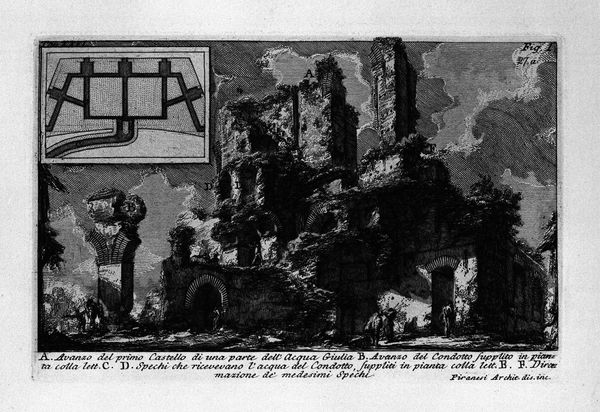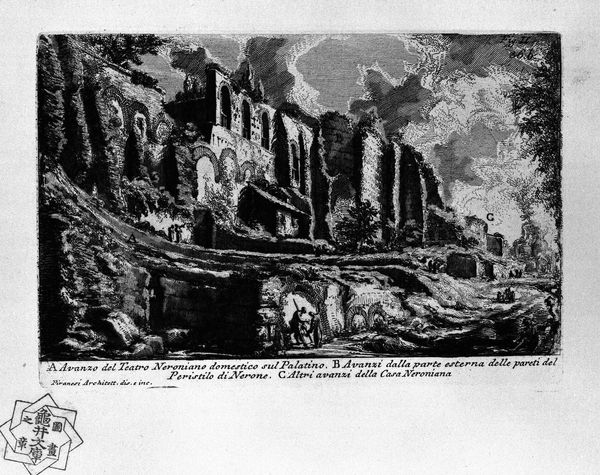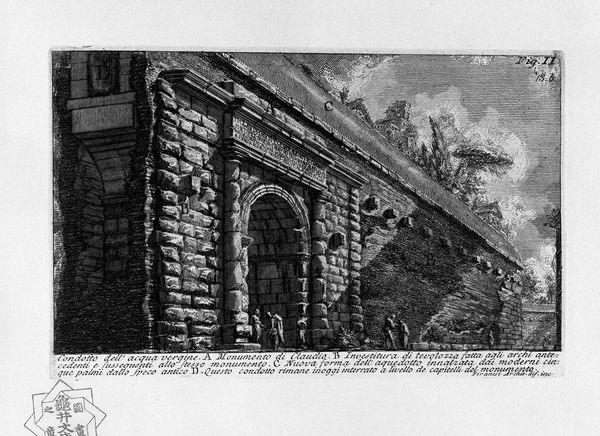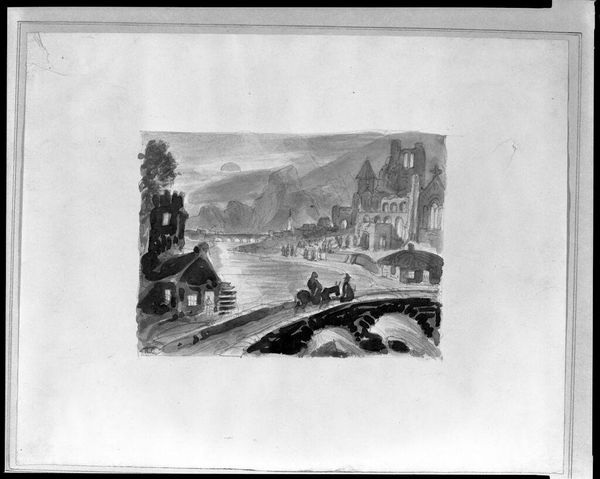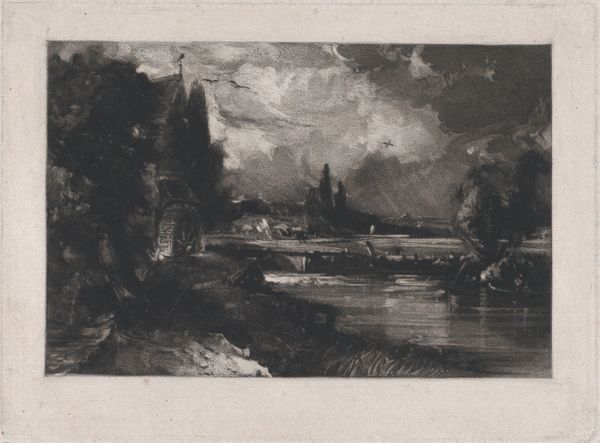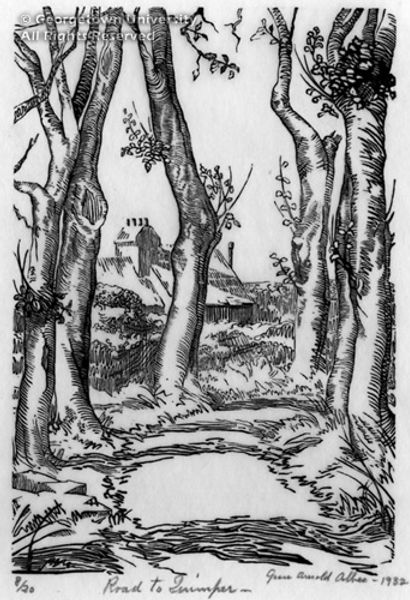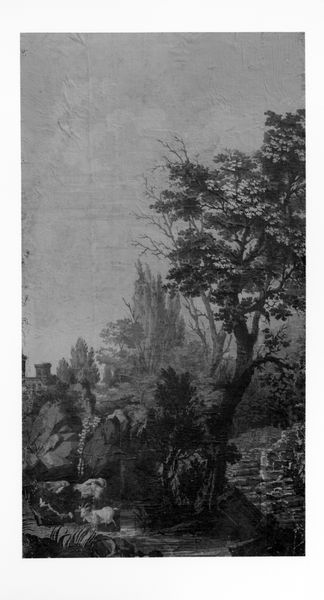
print, etching, engraving, architecture
# print
#
etching
#
landscape
#
romanesque
#
column
#
history-painting
#
engraving
#
architecture
Copyright: Public domain
Editor: This is "The Roman Antiquities, t. 1, Plate XXXIV" created by Giovanni Battista Piranesi in 1756, primarily through etching and engraving. What strikes me immediately is this interplay between the colossal ruins and the delicate details rendered in the print. How do you interpret the symbolism here? Curator: The ruins, especially these arches and columns, they aren’t just stones, are they? Piranesi masterfully uses them as potent symbols of a lost empire, a fractured, yet imposing past. Note how he frames these remnants—they become vessels brimming with collective memory, echoing Rome’s cultural weight through the ages. Editor: I see what you mean! The scale also emphasizes how time and perhaps neglect can erode even the grandest structures. Does the choice to depict it in black and white add another layer to that interpretation? Curator: Absolutely. The stark contrast, the absence of color, reinforces this feeling of loss, a monochrome testament to the vibrancy that once was. But the composition—with those diminutive figures dwarfed by the architecture—do they suggest anything to you about our relationship with the past? Editor: Maybe our insignificance in the face of history’s grand narrative? We are merely observers, interpreters, grappling with echoes of something immense that came before. Curator: Precisely. Piranesi’s work becomes a meditation on the enduring power of symbols. Despite ruin and decay, the echoes of Rome resound. It provokes us to consider, doesn’t it, how visual remnants speak volumes about who we were, and consequently, who we are. Editor: I hadn't thought of the visual remnants as echoing something enduring in that way, or really registering the enduring emotional power of ruins. Thanks!
Comments
No comments
Be the first to comment and join the conversation on the ultimate creative platform.
